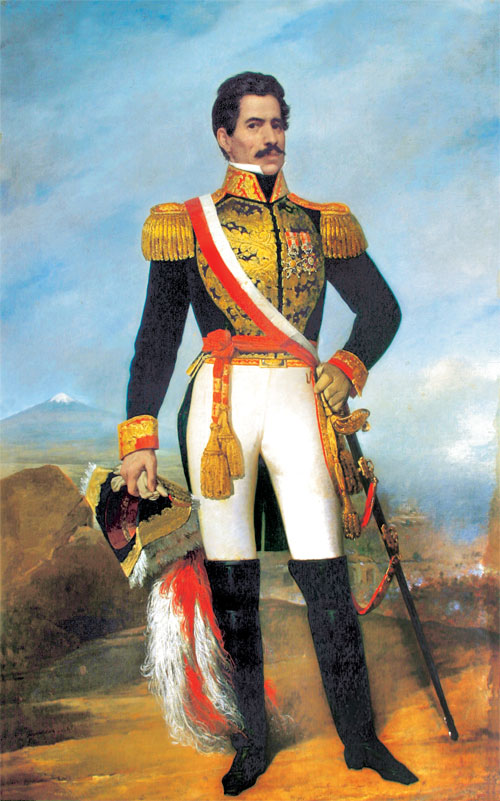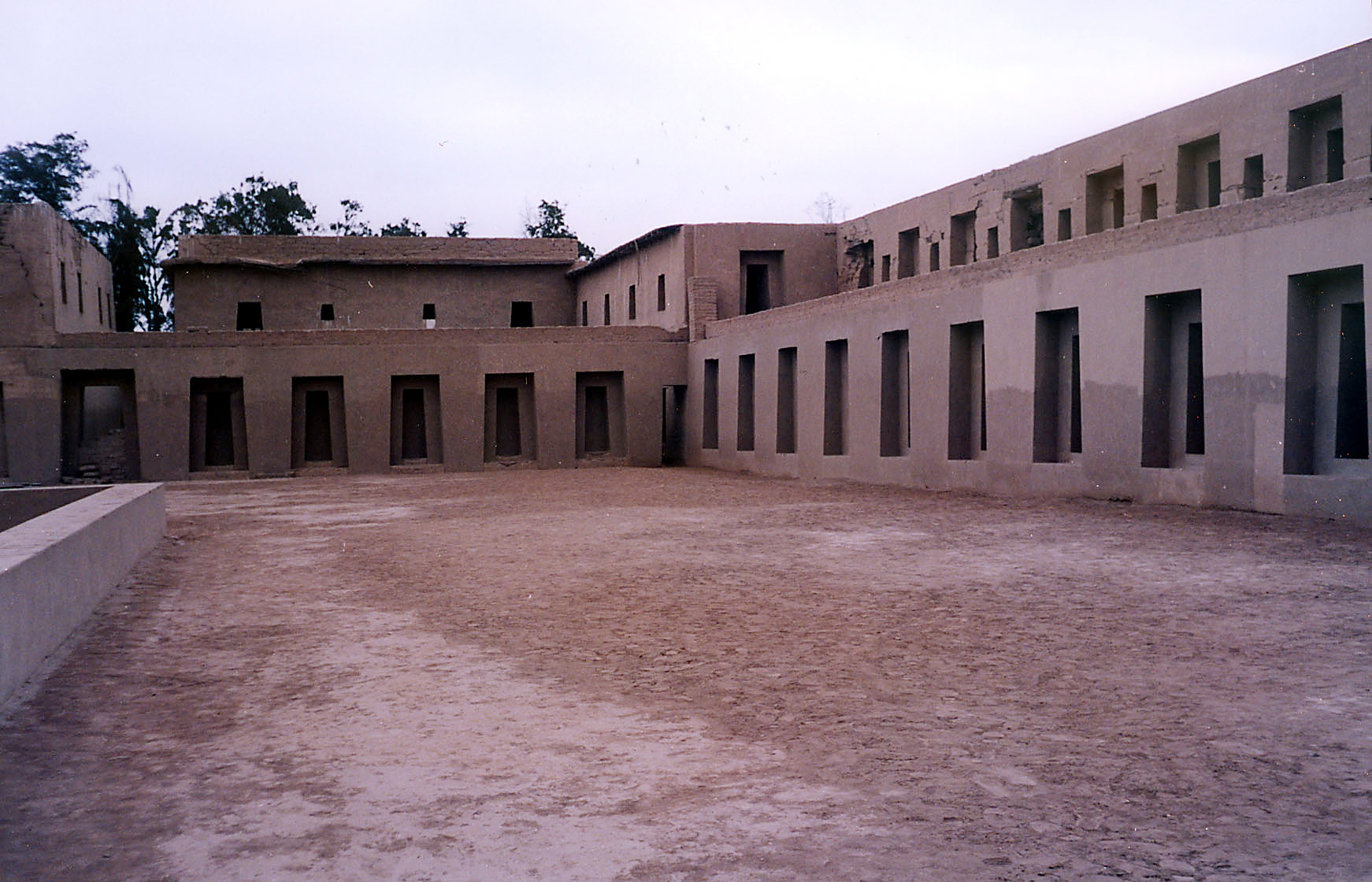|
Manuel Menéndez
Manuel Menéndez Gorozabel (1793 – May 2, 1847) was a Peruvian politician who served as President of Peru The president of Peru (), officially the constitutional president of the Republic of Peru (), is the head of state and head of government of Peru. The president is the head of the executive branch and is the supreme head of the Peruvian Armed ... from 1841 to 1842, and again from 1844 to 1845. He was ousted from office in a 1842 military coup carried out by General Juan Crisostomo Torrico. He was restored to office in the ''Constitutional Revolution'' of 1843-1844. See also * List of presidents of Peru References 1793 births 1847 deaths Presidents of Peru Viceroyalty of Peru people {{Peru-politician-stub ... [...More Info...] [...Related Items...] OR: [Wikipedia] [Google] [Baidu] |
Agustín Gamarra
Agustín Gamarra Messia (27 August 1785 – 18 November 1841) was a Peruvian soldier and politician, who served as the 4th and 6th President of Peru. Gamarra was a Mestizo, being of mixed Spanish and Quechua descent. He had a military life since childhood, battling against the royalist forces. He then joined the cause of Independence as second in command after Andrés de Santa Cruz. He also participated in the Battle of Ayacucho, and was later named Chief of State. In 1825, he married Francisca ('Pancha') Zubiaga y Bernales, who Simon Bolivar crowned when she was about to put the crown on him. After the invasion of Bolivia in 1828, he was named a mariscal (marshal), a highly esteemed military officer. After the defeat of José de La Mar in Gran Colombia, Gamarra urged his overthrow and assumed the presidency for a brief period after Antonio Gutiérrez de la Fuente. The peace treaty with Gran Colombia was also signed during Gamarra's government. He was a supporter of protecti ... [...More Info...] [...Related Items...] OR: [Wikipedia] [Google] [Baidu] |
Juan Francisco De Vidal
Juan Francisco de Vidal La Hoz (April 2, 1800 in Lima, Viceroyalty of Peru – September 23, 1863 in Lima) served as the 8th President of Peru The president of Peru (), officially the constitutional president of the Republic of Peru (), is the head of state and head of government of Peru. The president is the head of the executive branch and is the supreme head of the Peruvian Armed ... for a brief period between 1842 and 1843. Juan Francisco also helped with creating a certain version of laws for the rights of citizens. See also * List of presidents of Peru 1800 births 1863 deaths Viceroyalty of Peru people Presidents of Peru {{Peru-politician-stub ... [...More Info...] [...Related Items...] OR: [Wikipedia] [Google] [Baidu] |
Manuel Ignacio De Vivanco
Manuel Ignacio de Vivanco Iturralde (15 June 1806 – 16 September 1873) was a Peruvian politician and military leader who served as the President of Peru from 1843 to 1844. He was born in Lima, Peru. He led part of the Peruvian forces in the campaign against the reunification of Peru-Bolivian Confederacy. During the second administration of Agustín Gamarra, he was appointed prefect of Arequipa. In 1843, he rebelled against Juan Francisco de Vidal, but was defeated and fled to Bolivia. He returned to Peru then and subsequently became president in 1843 under the title "Supreme Director of the Republic". In the name of president Juan Antonio Pezet he signed the Vivanco–Pareja Treaty on 27 January 1865, which was one cause of the Chincha Islands War. From April to September 1865, he served as Prime Minister of Peru. He also served as Peruvian representative in Chile. See also * Politics of Peru The politics of the Republic of Peru takes place in a framework of a unitary ... [...More Info...] [...Related Items...] OR: [Wikipedia] [Google] [Baidu] |
Ramón Castilla
Ramón Castilla y Marquesado (; 31 August 1797 – 30 May 1867) was a Peruvian ''caudillo'' who served as President of Peru three times as well as the Interim President of Peru (Revolution Self-proclaimed President) in 1863. His earliest prominent appearance in Peruvian history began with his participation in a commanding role of the army of the Libertadores that helped Peru become an independent nation. Later, he led the country when the economy boomed due to the exploitation of guano deposits. Castilla's governments are remembered for having abolished slavery and modernized the state. He assumed the presidency for the first time after general Domingo Nieto's death for a short period in 1844, then in 1845 until 1851, again from 1855 to 1862 and, finally, during a brief period in 1863. First years Castilla was born in Tarapacá (then part of the Viceroyalty of Peru), the second son of Pedro Castilla, of Spanish-Argentine origin, and Juana Marquezado de Romero, who was ... [...More Info...] [...Related Items...] OR: [Wikipedia] [Google] [Baidu] |
Lima
Lima ( ; ), founded in 1535 as the Ciudad de los Reyes (, Spanish for "City of Biblical Magi, Kings"), is the capital and largest city of Peru. It is located in the valleys of the Chillón River, Chillón, Rímac River, Rímac and Lurín Rivers, in the desert zone of the central coastal part of the country, overlooking the Pacific Ocean. The city is considered the political, cultural, financial and commercial center of Peru. Due to its geostrategic importance, the Globalization and World Cities Research Network has categorized it as a "beta" tier city. Jurisdictionally, the metropolis extends mainly within the province of Lima and in a smaller portion, to the west, within the Constitutional Province of Callao, where the seaport and the Jorge Chávez Airport are located. Both provinces have regional autonomy since 2002. The 2023 census projection indicates that the city of Lima has an estimated population of 10,092,000 inhabitants, making it the List of cities in the Americas b ... [...More Info...] [...Related Items...] OR: [Wikipedia] [Google] [Baidu] |
Viceroyalty Of Peru
The Viceroyalty of Peru (), officially known as the Kingdom of Peru (), was a Monarchy of Spain, Spanish imperial provincial administrative district, created in 1542, that originally contained modern-day Peru and most of the Spanish Empire in South America, governed from the capital of Lima. Along with the Viceroyalty of New Spain, Peru was one of two Spanish Viceroyalty, viceroyalties in the Americas from the sixteenth to the eighteenth centuries. The Spanish did not resist the Portuguese colonization of the Americas, Portuguese expansion of Brazil across the meridian established by the Treaty of Tordesillas. The treaty was rendered meaningless between 1580 and 1640 while Iberian Union, Spain controlled Portugal. The creation during the 18th century of the Viceroyalties of Viceroyalty of New Granada, New Granada and Viceroyalty of the Río de la Plata, Río de la Plata (at the expense of Peru's territory) reduced the importance of Lima and shifted the lucrative Andean trade t ... [...More Info...] [...Related Items...] OR: [Wikipedia] [Google] [Baidu] |
President Of Peru
The president of Peru (), officially the constitutional president of the Republic of Peru (), is the head of state and head of government of Peru. The president is the head of the executive branch and is the supreme head of the Peruvian Armed Forces, Armed Forces and National Police of Peru. The office of president corresponds to the highest magistracy in the country, making the president the highest-ranking public official in Peru. Due to broadly interpreted impeachment wording in the Constitution of Peru, 1993 Constitution of Peru, the Congress of Peru can impeach the president without cause, effectively making the executive branch subject to the legislature. The president is elected to direct the general policy of the government, work with the Congress of the Republic and the Council of Ministers (Peru), Council of Ministers to enact reform, and be an administrator of the state, enforcing the constitution, which establishes the presidential requirements, rights, and obliga ... [...More Info...] [...Related Items...] OR: [Wikipedia] [Google] [Baidu] |
Juan Crisóstomo Torrico
Juan Crisóstomo Torrico Vargas (January 21, 1808, Lima, Peru – March 27, 1875, Paris, France) served as the 16th President of Peru during a brief period in 1842. At age 34, he was Peru's youngest President ever. In 1820, Torrico participated in the army of José de San Martín. He subsequently joined the ranks of Agustín Gamarra and participated under his leadership campaigns against the Peru-Bolivian Confederation, where the Peruvian forces were defeated in 1841 and Gamarra died in the battle of Ingavi on November 18, 1841. After Gamarra's death, Manuel Menéndez assumed the presidency of Peru. Torrico launched a successful coup d'état against Manuel Menéndez and assumed the presidency of Peru. His grab for power was short-lived since Peru was suffering various civil wars and Torrico was ousted during that same year by Juan Francisco de Vidal. Torrico found refuge in Bolivia, where he conspired against Vidal and then against Manuel Ignacio de Vivanco. He returned to Peru ... [...More Info...] [...Related Items...] OR: [Wikipedia] [Google] [Baidu] |
Domingo Elías
Domingo Elías Carbajo (July 19, 1805, Ica (city), Ica, Viceroyalty of Peru – July 3, 1867, Lima, Peru) served as President of Peru, Interim President of Peru (Self-proclaimed President) for a brief period between June and August 1844. Biography He assumed the Presidency of Peru during an epoch of civil war, which divided Peru between the followers of Ramón Castilla's government and those of Domingo Elías Carbajo. After completing his elementary studies, he travelled to Madrid and Paris to continue his education. He returned in 1825 and made a living from agriculture in the Ica Region, where he started a large cultivation of cotton and wine. This epoch coincided with the arrival of Han Chinese, Chinese coolies to replace the declining work of African slaves in 1849. After the defeat of the Peru-Bolivian Confederation during the decade of the 1840s, anarchy in Peru became rampant. In 1843, during the government of Manuel Ignacio de Vivanco, Elías was named prefect of Lima. Wh ... [...More Info...] [...Related Items...] OR: [Wikipedia] [Google] [Baidu] |
Justo Figuerola
Justo Figuerola (1770 in Lambayeque, Peru – 1854 in Lima, Peru) served as the 18th (15 March 1843 – 20 March 1843) and 21st (11 August 1844 – 7 October 1844) President of Peru The president of Peru (), officially the constitutional president of the Republic of Peru (), is the head of state and head of government of Peru. The president is the head of the executive branch and is the supreme head of the Peruvian Armed .... He served as the President of the Congress twice in 1823. References See also * List of presidents of Peru 1771 births 1854 deaths Presidents of Peru Presidents of the Congress of the Republic of Peru Viceroyalty of Peru people {{Peru-politician-stub ... [...More Info...] [...Related Items...] OR: [Wikipedia] [Google] [Baidu] |



